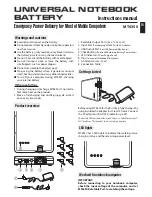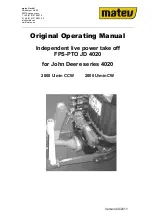
22
The required resistance can be determined according
to the following formula:
Required resistance R (in ohms) is equal to the square of the
on-board voltage (12 volts) divided by the watt difference
between the old and the new turn signal. The original wattage
can either be found on the original bulb itself, in the vehicle
handbook or on the turn signal lens.
Example: An 7.5 ohm resistor simulates 19.2 watts, an 8.2 ohm
resistor simulates 17.6 watts and a 10 ohm resistor simulates
14.4 watts. The resistors are available partly pre-wired and can
therefore be installed particularly easily; an incorrect connection
is no longer possible.
The special flasher unit with the order no. 10033844 (operating
range of 1 to 30 W) for LED turn signals can only be used if the
vehicle is equipped with two turn signal indicator lights. If, on
the other hand, there is a common turn signal indicator light for
the right and left turn signal circuit, or a hazard warning flasher
system or an acoustic turn signal, malfunctions may occur – in
these cases, resistors should be used.
Please keep in mind that if electronic flasher relays are used, the
failure of a turn signal is no longer indicated by the indicator
light. Therefore, carry out a function check before every journey.
5 | STORAGE
Prior to installation, store the turn signal in a closed room that
is protected against the weather and moisture. Humidity should
not exceed 80%.
6 | CLEANING AND CARE
Use warm soapy water or a motorcycle cleaner and a soft
cloth to clean the turn signals. Do not use a harsh cleaner which
could corrode the aluminium and do not use a high-pressure
cleaner, as this can destroy seals and drive water into the turn
signal. Afterwards, use a wax-based product which will protect
the surfaces against the elements.
















































